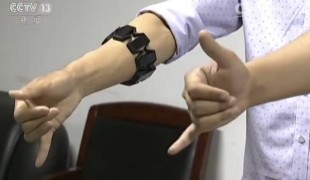- 10435
- 774
- 17
- 17
- 0
- Help Ukraine
About the solution
Project Vive is a humanitarian effort to help improve the lives of people with complex communication needs(CCNs). In doing so, we are utilizing technology to develop, manufacture, and distribute a low-cost, wearable speech generation device(SGD). The range of pertinent diagnoses that can benefit from our technology include cerebral palsy(CP), amyotrophic lateral sclerosis(ALS), anoxic brain injury, and others. For those with a more serious lack of body movement or muscle control, these devices are not only overpriced, but also exceedingly impractical for their needs. For this reason, many continue to live with very limited communication. In less developed countries, and even in the United States, the number of affected individuals is high, while the ability to pay for assistance devices is low. Current devices can cost anywhere from $5,000 to $60,000 plus maintenance fees. It is estimated that globally 3.4 million people worldwide have a form of cerebral palsy that prevents them from communicating through speech and this statistic doesn’t include other conditions.
Project Vive is now a team of engineers and programmers with a mission to give a voice to the voiceless, by making our patent-pending technology accessible to everyone. Our devices include wearable technology that allows users to navigate through a simple menu structure to construct sentences using a variety of body movements. Project Vive is currently in pilot testing and looking for children and adults in Pennsylvania to try out our products and provide feedback to assist development. Learn more at Projectvive.com or contact us at http://www.projectvive.com/contact.
这些解决方案不应包括使用药物,化学品或生物制品(包括食品);创伤性设备;冒犯性的,商业或内在危险的内容。该解决方案未经医学验证。请谨慎进行!如果您有任何疑问,请咨询健康专家。
-
-
710
-
0
-
11260

Girls create translation armband for the deaf
COMMUNICATION: Communicating, whether by speaking, listening, or other means
Social interaction
Congenital Deafness
Hearing Disorders
Ear and Labyrinth Disorders
5 Senses support devices: (glasses, hearing aids, headphones...)
Assistive Daily Life Device (to help ADL)
Body-Worn solutions (Clothing, accessories, shoes, sensors...)
Hearing loss or ringing in the ears (tinnitus)
Managing Neurological Disorders
Promoting inclusivity and social integration
Improving Speech and Communication
General and Family Medicine
Neurology
Otorhinolaryngology
China
-
-
-
582
-
0
-
9662

Cane helps blind people recognize faces
COMMUNICATION: Communicating, whether by speaking, listening, or other means
WALKING WITH A WALKING AID: Walking with a walking aid
Urban exploration
Traveling
Social interaction
Blindness
Assistive Daily Life Device (to help ADL)
Walking Aid (wheelchair/walker/crutches)
Vision problems
Sensitivity to light or sound
Restoring mobility
Promoting self-management
Managing Neurological Disorders
Promoting inclusivity and social integration
Maintaining Balance and Mobility
Improving Speech and Communication
Preventing (Vaccination, Protection, Falls, Research/Mapping)
Neurology
Ophthalmology
United Kingdom
-
-
-
765
-
0
-
17098

Proloquo2Go – App to help people communicate
CAREGIVING
COMMUNICATION: Communicating, whether by speaking, listening, or other means
Social interaction
Paralysis
Autism
Cerebral Palsy
Brain Stroke
Brain Injury (Abscess, Brain Barrier Defect, Brain Contusion, Brain Hemorrhage, Brain Edema)
Assistive Daily Life Device (to help ADL)
Assistive Technology access
App (Including when connected with wearable)
Tremors
Muscle cramps or spasms
Difficulty coordinating movements
Muscle weakness
Difficulty speaking or understanding speech
Trouble with fine motor skills (e.g., writing, buttoning clothes)
Twitching or involuntary movements (myoclonus)
Acquired language impairment (Aphasia)
Promoting self-management
Managing Neurological Disorders
Building Supportive Community Relationships
Promoting inclusivity and social integration
Improving Speech and Communication
Caregiving Support
Clinical Pathology
Medical Genetics
Neurology
Pediatrics
Rheumatology
Netherlands
-
 zh
zh